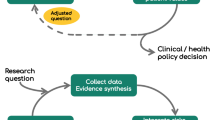Abstract
Achieving a successful outcome in investigative trials is the most important objective in clinical research. Increasing the probability of meeting this objective requires careful planning and the inclusion of appropriate controls throughout the life cycle of a project. It is essential to determine the feasibility of conducting a trial through carefully structured surveys with a consortium of clinicians who have expertise in the therapeutic area of interest, preferably on a global basis. To optimize the initiation phase, a concentrated effort at the ‘front end’ of projects is necessary to appropriately set priorities so that timelines are realistic and achievable within the clinical development plan and at the conclusion.
Fundamental to the planning process is strategic planning and a well developed, in-depth project plan designed to provide the foundation to launch and execute trials successfully in accordance with the study protocol, and equally importantly, the regulations and guidelines. The most effective strategies and project plans are simplistic in design, thereby enabling seamless continuity among all project activities and adherence to budgetary constraints.




Similar content being viewed by others
References
Spilker B. Recruitment of study participants: guide to clinical research. New York: Raven Press, 1991, 141–53
Spilker B. Planning and conducting multiple trials: guide to clinical research. New York: Raven Press, 1991, 860–63.
Wills D. The planning paradigm: the marriage between clinical operations and project management. Drug Inf J 2001; 35: 1039–42
Wilhelm M. Project management in pharmaceutical biometry and data management: conception, implementation, and operations. Drug Inf J 1998; 32: 221–8
Kubrick WR. The elegant machine: applying technology to optimize clinical trials. Drug Inf J 1998; 32: 861–69
Olson CM. Introduction to improving clinical trials: contemporary design solutions including endpoints, surrogate comparators, project planning, and computer-assisted trial design (CATD). Drug Inf J 1998; 32: 955–6
Norwood P. Clinical trials in biotechnology: a perspective from the pharmaceutical industry. Drug Inf J 1996; 30: 559–62
Acknowledgements
The authors have provided no information on sources of funding or on conflicts of interest directly relevant to the content of this review.
Author information
Authors and Affiliations
Corresponding author
Rights and permissions
About this article
Cite this article
Wills, D.R. Practical Tools and Techniques for Project Planning and Control in Clinical Research. Pharm Dev Regul 1, 261–268 (2003). https://doi.org/10.1007/BF03257385
Published:
Issue Date:
DOI: https://doi.org/10.1007/BF03257385




